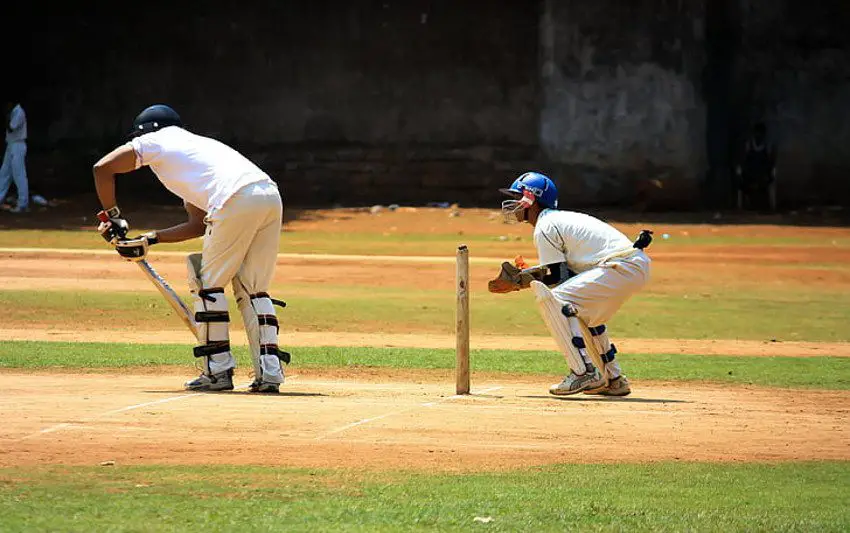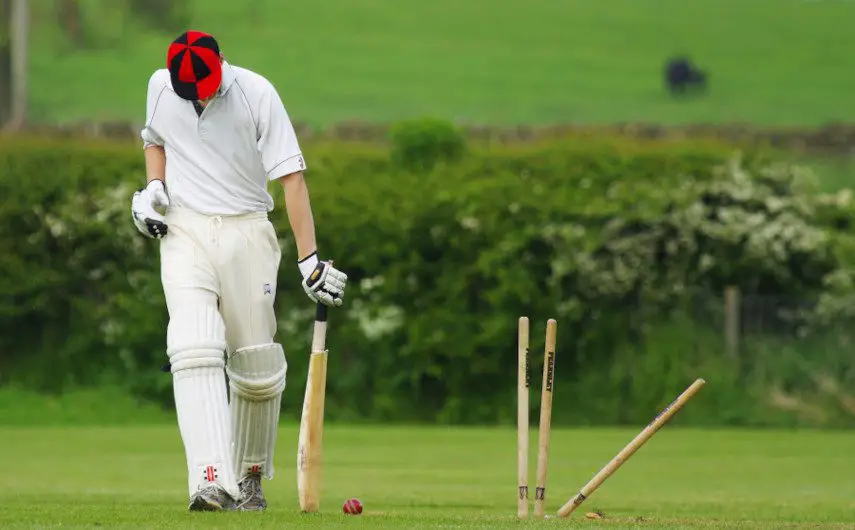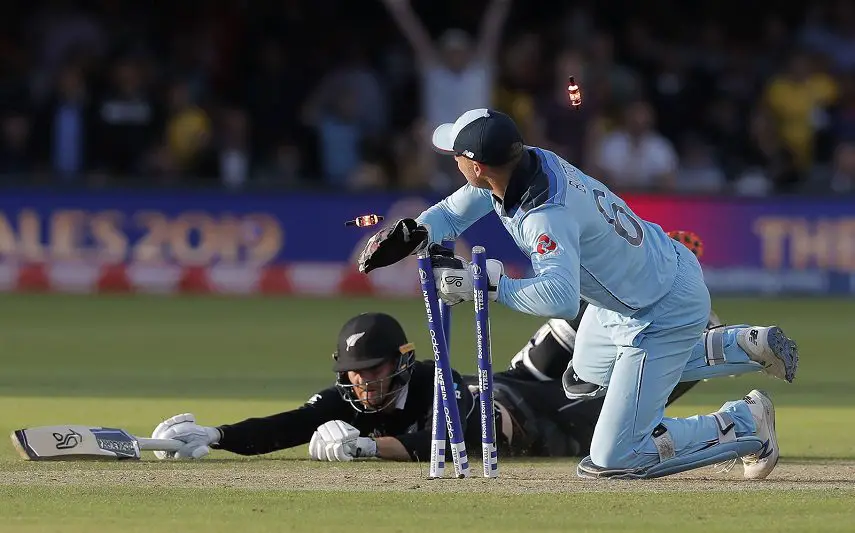Table of Contents
It’s arguably the most important fielding position in any cricket team, so let’s take a look at what a wicket keeper has to undertake during a match.
What is the Role of the Wicket-Keeper?
A wicket keeper stands directly behind the stumps at the batter’s end. Their main role is to stop the ball after it has passed by those stumps.
If the batter hasn’t made contact with the ball, they are stopping byes from being scored. If there is contact, leg byes and runs are to be prevented. The wicket keeper is also there to catch the ball and secure a ‘caught’ dismissal.


Major Tasks of the Wicket-Keeper
Over the course of a game of cricket, a wicket keeper is likely to be involved more than anyone else in the team. I’ve summarised the role in the previous section, but there is much more for the keeper to do.
When the ball is thrown in from the outfield, it will usually go to the wicket keeper’s end. If there is a chance of a run out at the bowler’s end, the ball should be thrown to the bowler, but the keeper is in play most of the time.
The wicket keeper is the only player in the team who can effect stumpings. If the batter is out of their crease and the keeper takes the bails off when the ball has passed the wicket, they should be given out stumped.
Then there are the tasks outlined above. If the batter edges the ball, those big gloves help the keeper to take catches. They are also in place to stop byes and leg byes.
Those are the major tasks but, in modern day cricket, the role of the wicket keeper has grown somewhat. The advent of the Decision Review System (DRS), has given the keeper another job to do.
The wicket keeper can help their captain decide whether it’s worth a referral to the third umpire in regard to marginal calls. They will be best placed to argue as to whether an LBW decision is likely.
Similarly, with those faint edges behind the stumps, the keeper should be in the best position to know whether or not the ball has touched the bat.
Another, lesser known task involves setting the field. Having studied the batter from the closest possible position, the wicket keeper can help the captain and bowler when it comes to moving fielders into places where the ball is likely to travel.
The Wicket-Keeper Law
Law 27.2
Law 27.2 covers the opening set of regulations relating to wicket keepers. It underlines what they can and can’t do and it runs into several paragraphs.
Wicket keeper Rules & Restrictions
Part of the law relates to the equipment used by the wicket keeper and it’s essential that the player follows the rules. In recent years, there has been much discussion about the webbing placed between the fingers of those gloves.
The law here states that the webbing must not protrude beyond the straight line joining the top of the index finger. It should also be taught when the thumb is fully extended.
The law goes on to talk about the wicket keeper’s positioning. They must be wholly behind the wicket until the ball either passes the stumps, the batter attempts a run or the ball has struck the bat or a part of the batter’s body.
If a keeper were to take the ball in front of the stumps without any of this happening, the square leg umpire should call a no ball.
The law relating to wicket keepers carries on by discussing rules relating to fair play.
Law 27.4
Law 27.4 is titled Movement by the Wicket Keeper.
Once the ball leaves the bowler’s hand, it is deemed to be in play. At that point, the keeper must not significantly alter their position until it passes the stumps or is struck by the batter.
This is a law where the standing umpires may have to apply some common sense on occasions. If, for example, a seam bowler delivers a much slower ball, it is permissible for the wicket keeper to walk forward one or two paces.
There is also scope for lateral movement towards the direction that the ball is travelling. If the ball is heading wide down the leg side, it would be unfair to expect the keeper to wait until the ball had passed the stumps.
Wicket keepers can also make some lateral movement in response to any shot that the batter appears to be playing.
Wicket Keeper FAQ
How Many Wicket Keepers are in a Cricket Team?
There is only one wicket keeper allowed in a cricket team. In the event of injury or absences for any other reason, another player may take their place, but only one wicket keeper is allowed to stand at any specific point in a cricket match.
Which Fielder Stands Closest to the Wicket Keeper?
The fielder who will generally stand closest to the wicket keeper is first slip. First slip will stand on the off side, as a close catcher. If the batter is right handed, the slip will stand to the keeper’s right.
If the batter is left handed, slip will be to the left side.
Other fielders will be close to the wicket keeper. The captain may employ a leg slip and, when a slow bowler is used, there may be a short leg and silly mid off. However, regulation first slip is likely to be closest.
Conclusion
I must admit that, until I’d run through this preview, I hadn’t really appreciated just how much a wicket keeper has to do. We watch a game and just expect the keeper to take the ball when it passes the bat and catch it when the batter has edged it.
Stumpings and most run outs will also involve the keeper so they are heavily involved in three types of dismissal. The role of the wicket keeper cannot be underestimated in regards to DRS decisions, and that’s a new task that we don’t always think about.
It’s for all of these reasons that most cricket fans will argue that the wicket keeper is the most important player in the team.



